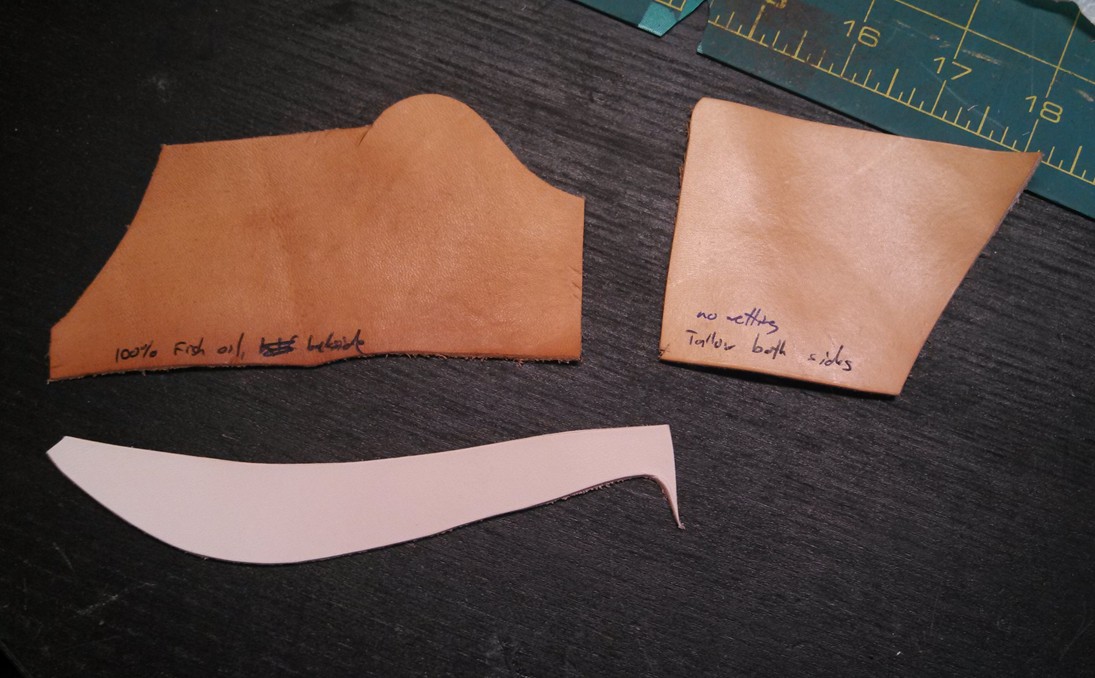After looking at the four pieces, I discovered that there was something of a difference between the piece of leather that had been oiled on both sides rather than just the front, so I decided to go with just the one which had been oiled on both sides. For the tallow, there might have been a slight difference in tallowing leather that had been wet – it didn’t take the tallow as well. As a matter of course, you kind of want as much oil and grease in the leather as you can get, which will keep it in the best shape. So, dry is certainly the way to go, and you will get more tallow into it when dry.
I also noticed that to get a rather darker look than I was looking for, I had to apply a couple of coats of fish oil. I also found that if you dunked the leather in a bucket, it did NOT take the fish oil very well, so I ended up simply spritzing it down with a spray bottle and using a rag to apply the fish oil. Essentially, the dryer your leather is, the darker the oil will make it look. Dark leather is lovely, but you don’t want streaky dark leather, so I would err on the side of a bit of dampness and several applications. I let this leather sit for about three weeks, and although I am told that it is supposed to “jelly” up a little, I did not notice a significant difference. Possibly, I did not oil the leather enough. In any event, you can see below the leather I started with and how much darker it is now. Quite a difference!
However, tallowing made the leather beautifully supple and smooth – I cannot say at this time if the leather will retain its suppleness and smoothness over time or if the tallow will leech out too quickly, but I will be sure to keep you in the loop and update this post accordingly. From now on, all of my shoes will be at least tallowed, if I do not have the time to oil them as well. Neatfoot oil might have a similar effect, but it is modern, and I’d rather go for something that has some historical appeal to it. We are, after all, reproducing history!
